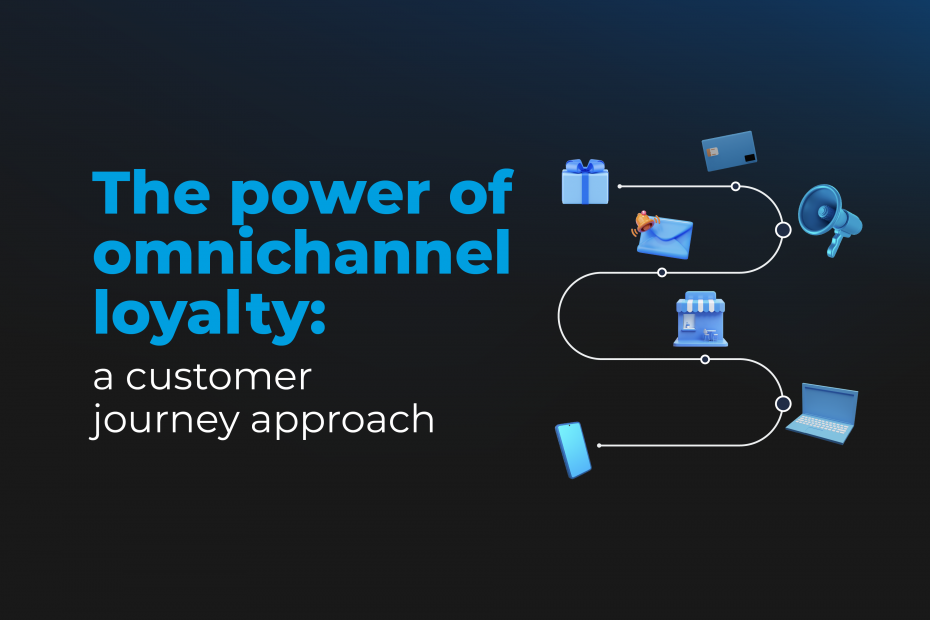Why loyalty must work across every touchpoint
Customer journeys today are complex. A shopper may start by browsing online, compare prices in an app, visit a physical store to test a product, and then complete the purchase on an e-commerce site. For them, the process is seamless, they don’t think in “channels.” They simply expect recognition and rewards to follow wherever they interact with the brand.
This is why traditional customer loyalty programs that operate in silos are no longer enough. If a customer earns points online but cannot redeem them in-store, or if mobile offers don’t align with email promotions, the program quickly loses credibility. Shoppers want continuity, consistency, and value at every stage.
To meet these expectations, retailers must adopt omnichannel loyalty programs. These programs integrate online and offline touchpoints into a single journey. They ensure that rewards, messaging, and experiences are consistent no matter where the customer chooses to engage.
Unifying loyalty across channels is not only a best practice but a necessity for building sustainable engagement.
Connecting online and in-store engagement
The real value of omnichannel loyalty lies in the connection between touchpoints. Customers want their digital and physical experiences to feel like part of the same conversation.
Imagine a customer who sees a personalized email with a promo code, applies it in a mobile app, and then redeems additional points in-store during checkout. This kind of journey creates confidence in the program and builds long-term trust.
Without technology to connect these steps, retailers risk offering fragmented experiences. A disconnected program frustrates customers and leads to lost sales. With Loymax, retailers can orchestrate loyalty programs, promo code campaigns, and gamified mechanics across multiple environments, ensuring that every reward feels consistent and every message is synchronized.
This approach also supports retail customer engagement by enabling seamless transitions. Customers can:
- Earn rewards in one channel and redeem in another.
- Trigger automated recognition when switching between online and offline shopping.
- Access promotions that reflect real-time data, not outdated batch updates.
Such connectivity ensures that loyalty is not tied to a single platform but is embedded into the customer journey itself.
Use cases: mobile app rewards, in-store QR, email triggers
Retailers that lead in loyalty are already testing loyalty program examples that go far beyond points and discounts. Below are three practical use cases where omnichannel loyalty adds measurable value.
Mobile app rewards
Mobile apps remain one of the most effective tools for engagement. Through push notifications, retailers can deliver personalized offers triggered by past purchases, browsing behavior, or even location. A well-timed mobile offer encourages repeat visits and strengthens brand connection.
In-store QR codes
Physical stores can also innovate. QR codes at checkout or on product displays allow customers to instantly scan, earn, or redeem rewards. Gamified mechanics – like mystery prizes revealed through QR scans – make the experience interactive and memorable.
Email triggers
Emails continue to be a powerful tool when automated effectively. Triggered campaigns can reward repeat purchases, recover abandoned carts, or promote seasonal offers. When combined with CRM marketing automation, emails become not just communication tools but loyalty drivers.
The key in each case is integration. A mobile app notification should align with in-store rewards, and email triggers should reinforce app behavior. Only a connected system can provide the responsiveness needed to keep customers engaged at every stage.
Tech requirements for seamless omnichannel delivery
Omnichannel loyalty is not just a matter of creativity, it is a question of technology and execution. Retailers need platforms that remove complexity, minimize staff workload, and allow for constant optimization.
The essential requirements include:
- Data integration
Loyalty cannot run effectively if customer data is scattered across e-commerce platforms, POS systems, and mobile apps. Integration ensures a single view of the customer and enables accurate targeting. - Automation solutions
Manual processes cannot keep up with the demands of omnichannel loyalty. Marketing automation allows retailers to run multiple campaigns, tests, and triggers simultaneously, without coding or heavy operational overhead. - Smart communications
Customers expect consistent, relevant messaging. With automated communications, retailers can send personalized messages in real time, ensuring relevance across touchpoints. - Scalability and reliability
Retailers need platforms that can orchestrate dozens of campaigns at once while maintaining performance. A loyalty program that crashes under scale or delivers inconsistent results risks damaging trust.
Loymax addresses all these requirements and launch either simple or complicated programs without coding. This ensures omnichannel delivery that is sustainable, efficient, and built for growth.
How omnichannel loyalty drives measurable results
The benefits of omnichannel loyalty extend beyond engagement. When executed well, these programs deliver tangible business outcomes:
- Higher CLTV (Customer Lifetime Value): customers who interact across multiple channels are proven to spend more and stay longer.
- Improved AOV (Average Order Value): gamification and cross-channel offers encourage larger purchases.
- Better conversion: consistent rewards reduce friction at checkout and improve e-commerce conversion rates.
- Deeper insights: unified data enables cohort analysis, segmentation, and RFM modeling, making future campaigns more effective.
Retailers who invest in omnichannel loyalty also gain competitive advantage. As explored in our Case Study: How a Large Fuel Retailer Transformed Loyalty, orchestrating campaigns across multiple channels led to measurable improvements in retention and engagement.
Conclusion
Customers no longer think in channels, they think in journeys. If a loyalty program fails to connect online, offline, and mobile experiences, it risks becoming irrelevant.
With Loymax, retailers can move beyond siloed approaches and create customer loyalty rewards programs that follow the customer wherever they go. By connecting mobile app rewards, in-store QR codes, and automated email triggers into a single system, we help retailers orchestrate loyalty programs, promo codes, and gamification campaigns with reliability and scale.
The result is simple: more engaged customers, higher retention, and measurable business growth.
👉 See how Loymax connects your channels and delivers omnichannel loyalty that works at scale: https://loymax.io

